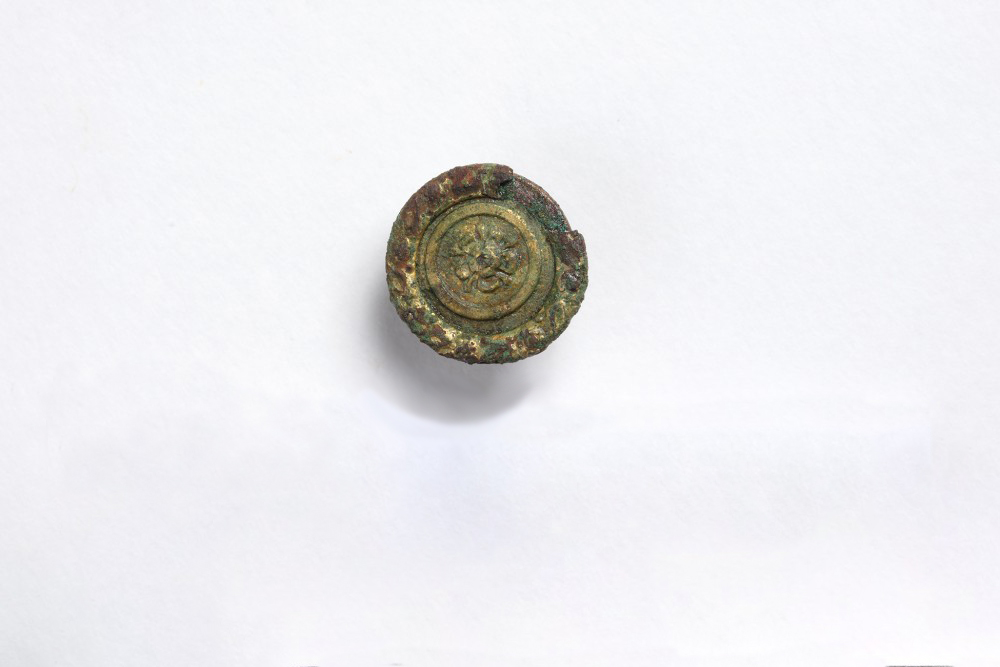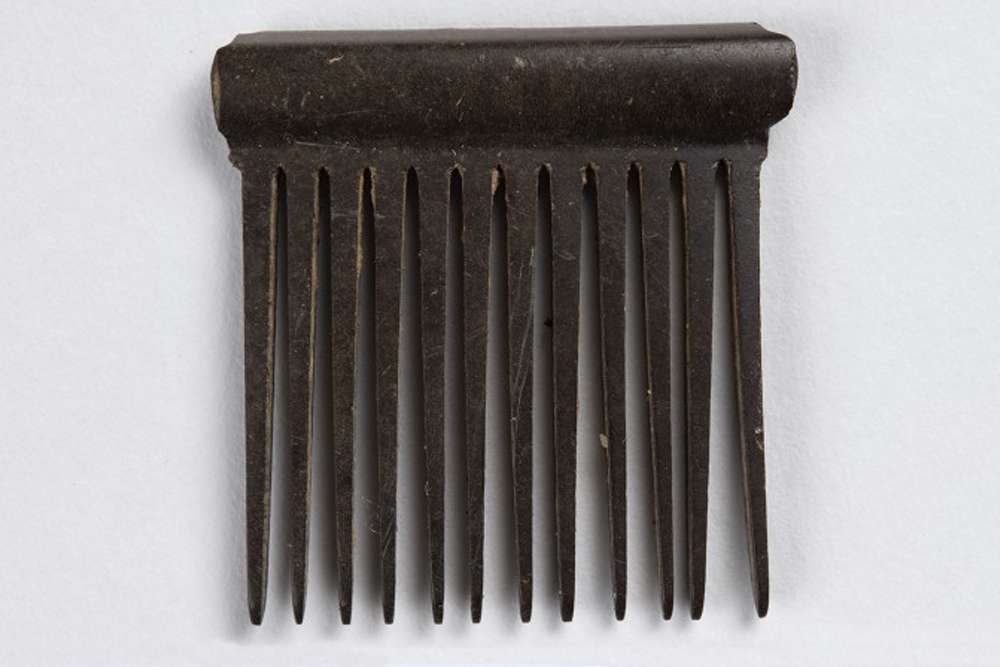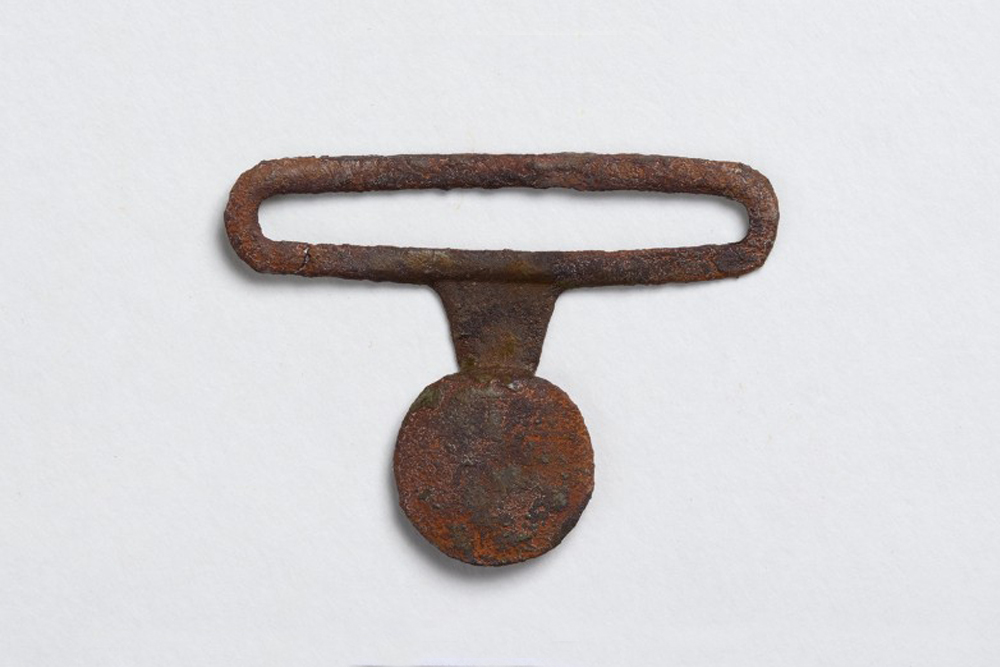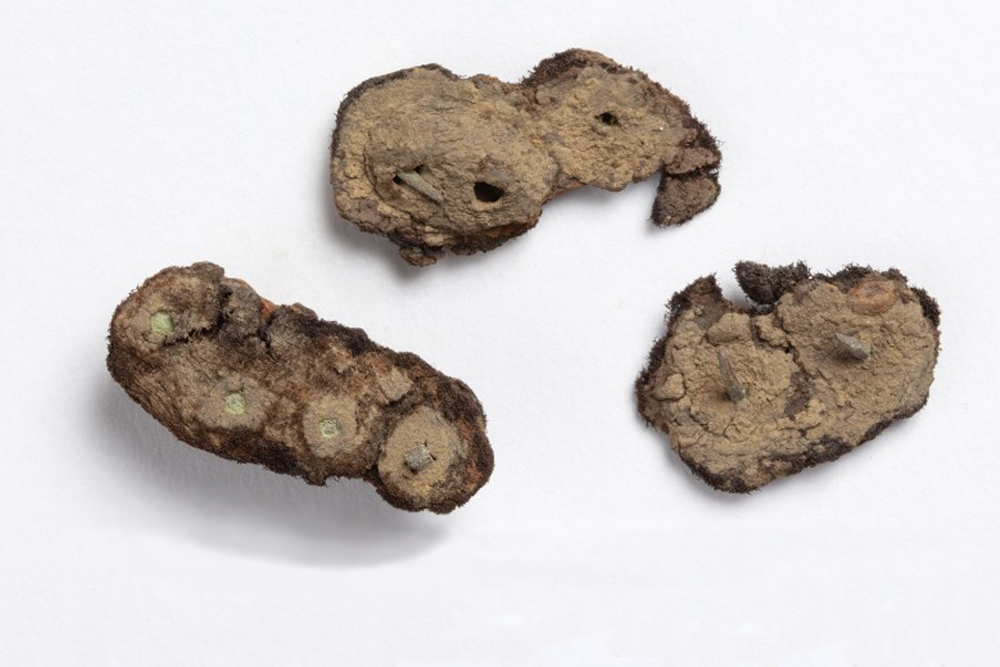Comb
This artifact is a comb made from gutta percha, though at first glance it looks like it is made from wood, rubber, or plastic. Gutta percha is a liquid substance that comes from Malaysian trees. The liquid is extracted by crushing the tree’s leaves under granite boulders (Wong 2016). This material is significant for a number of reasons. Firstly, it gives us insight into what was traded and imported in America during the nineteenth century. Secondly, it is rare and durable, likely increasing the value of the comb.
Combs during the nineteenth century were commonly made from bone, wood, and ivory (Smith 2017). Combs made out of these materials, if dropped, could easily break. Gutta percha was the ideal material for combs because it is a solid, durable substance that was not prohibitively expensive for most people. Aside from bone, wood, and ivory, combs were also made from horns and tortoiseshells. These combs were typically used for decorative purposes. Tortoiseshell was the most desirable material for decorative combs because of its color and plasticity (White 2005).
Gutta percha combs were more expensive than standard combs made of wood or bone, because of the origin of the material in Malaysia. The cost of importing the material from the other side of the world contributed to the cost of the comb. Materials like wood and bone, in contrast, were easily accessible to the majority of the American population during that time. Nevertheless, there was trade between the U.S., Europe, and the Far East, that regularly brought goods from China and Malaysia. Therefore, it was not especially rare to have a comb made of gutta percha, but more rare than a comb of wood or bone.
This comb was most likely owned by one of the working- or middle-class families that resided in Seneca Village. The purpose of this comb was not solely to comb hair. Just as clothing is used to show wealth and status, so are combs. Women in the working and middle showed their status not only through their clothing, but also their hair styles. They would not have bought many decorative combs to keep up with fashionable trends like upper-class women did, but they likely still followed the trends of Victorian hairstyling.
Present Day Gutta Percha
Gutta percha is still used today, but not in the way it was used during the nineteenth century. If you ever go to the dentist to get a root canal, an object called a gutta percha point will be used. It almost looks like a toothpick and its function is to fill in the root canal. The same liquid substance, gutta percha, that was used to make the combs is now used to fill in root canals. The material is heated and compressed into the canal of the tooth, which is then sealed with an adhesive cement. Other materials have been tested for filling the root canal, and the results varied from satisfactory to disastrous. The clinical performance of gutta percha has remained consistent under various clinical situations across the world (Vishwanath and H Murali 2019).
Hairstyling
The way that enslaved African Americans styled their hair was important to their individual identities. Styling and grooming hair was a part of their culture and it became a communal activity. Hair is a medium through which social messages and culture can be conveyed. In the 1960s, hairstyles such as afros and dreadlocks were symbols of pride and political empowerment for Black people (White 2009).
During the Victorian era, a woman’s hair was thought to be her most valuable asset. Because of this, women took serious care of their hair, and accessories such as combs, pearls, hats, and bonnets cycled throughout the 1800s. Hair was worn long during the Victorian age, as it was considered to be feminine and desirable. Long hair was commonly styled in an updo, as shown in Figure 3, especially by upper-class women. During the 1830s, women wore a neat bun, braids, or twists. In the 1840s, women began to wear “barley curls”, which were long ringlets. From the beginning of the 1850s, African American women also followed the trend of Victorian age hairstyles. To obtain these styles, they would use a hot comb, introduced in the late nineteenth century, to straighten their hair.
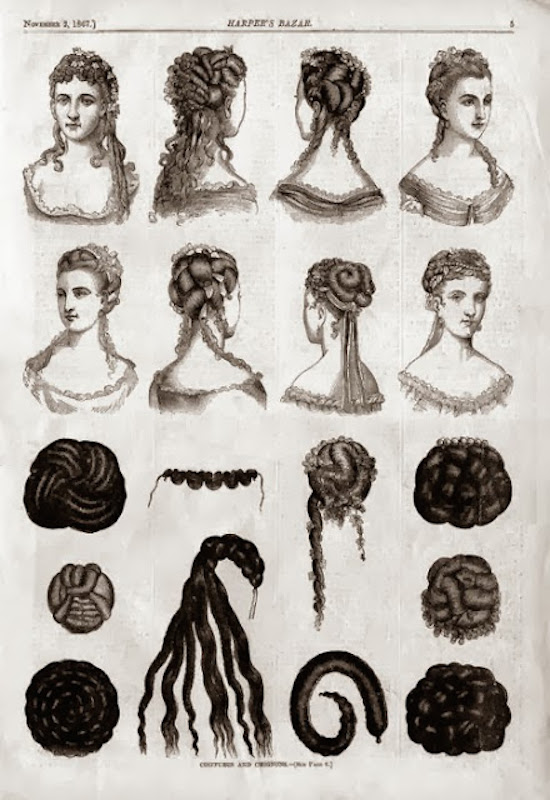
Figure 3: Here are 8 examples of how women styled their hair during the Victorian age. It was common for women to add a bun or extra hair piece to their head because it made these elaborate styles easier to recreate. Kathleen Harris. “Victorian Hairstyles: a short story, in photos” 2015-28-7 https://www.whizzpast.com/victorian-hairstyles-a-short-history-in-photos/#:~:text=Long%20hair%20styled%20in%20an,woman%20being%20taken%20into%20account.
Presentation of the Self
This comb connects with the theme of presentation of the self because it played a role in how a woman presented herself to society through her hair. Combs had many uses in the nineteenth century and were commonly used as decorative items in order for women to keep in step with fashionable trends. Combs were used to create elaborate hairstyles, allowing woman to express their individuality and show their status. From the nineteenth century to present day, people have cared and paid attention to how they presented themselves to society. Other artifacts from this period, such as the girdle and the button, are examples of how people carefully considered their appearance.
Works Cited
New York City Archaeological Repository: The Nan A. Rothschild Research Center. 2020. “Seneca Village.” NYC Landmarks Preservation Commission, New York, NY. http://archaeology.cityofnewyork.us/collection/map/seneca-village.
Smith, Ernie. 18 Aug, 2017. “A Brief History of the Unbreakable Comb.” Atlas Obscura. www.atlasobscura.com/articles/unbreakable-comb-history.
Vishwanath, Vijetha, and H. Murali Rao. 2019. “Gutta-Percha in Endodontics – A Comprehensive Review of Material Science.” Journal of Conservative Dentistry 22, no. 3: 216-222.
White, Shane, and Graham White. 1999. Stylin’: African-American Expressive Culture, from Its Beginnings to the Zoot Suit. Cornell: Cornell University Press.
White, Carolyn. 2005. American Artifacts of Personal Adornment 1680-1820. Lanham, MD: Altamira Press.
Wong, Joon Ian. 6 Oct, 2016. “The Story of the Humble Latex, Which Laid the Foundation for the Global Web.” Quartz. www.qz.com/785119/the-forgotten-tropical-tree-sap-that-set-off-a-victorian-tech-boom-and-gave-us-global-telecommunications/.



